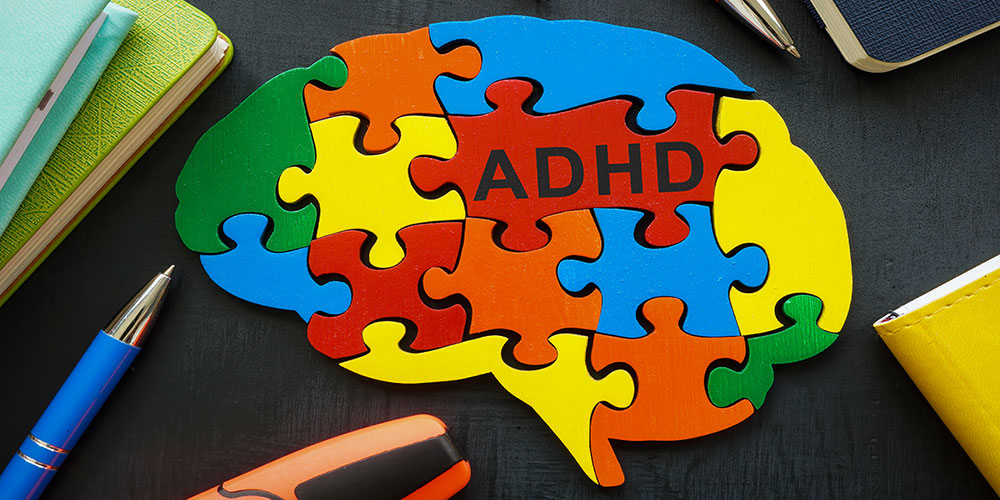More than seven million kids and adolescents in the U.S. received an attention-deficit/hyperactivity disorder (ADHD) diagnosis in 2022 — up from 5.4 million in 2016.
A new report from the Centers for Disease Control and Prevention (CDC), which calls ADHD an “expanding public health concern,” determined one in nine children between the ages of three and 17 were diagnosed with ADHD, one of the most commonly diagnosed neurodevelopmental disorders in children and teens. It is often characterized by difficulty concentrating, sitting still, or exercising self-control.
Melissa Danielson, a statistician with the CDC’s National Center on Birth Defects and Developmental Disabilities and the study’s lead author, said one reason for the increase is a growing awareness of ADHD symptoms. Doctors have also gotten better at recognizing the disorder in girls. Decades ago, ADHD was thought of as a disorder of hyperactivity among boys. Boys have long been diagnosed with ADHD at around 2.5 times the rate of girls, but new reports show the difference is narrowing.
“Boys will often have hyperactive or impulsive ADHD, where they’ll run into the street or jump off things or do things that might make them more likely to be injured,” Danielson said. “Girls tend to manifest their ADHD in a more inattentive way. They’ll be daydreaming or have a lack of focus or be hyper-focused on a particular task that maybe is not the task that they need to be focused on.”
Dr. Willough Jenkins, a psychiatrist at Rady Children’s Hospital-San Diego, told NBC News that changes in diagnostic guidelines from the American Psychiatric Association also impacted ADHD rates. Until 2013, doctors would not diagnose a child with both autism and ADHD due to concerns that attention issues related to autism would be confused with ADHD. A child also needed to have ADHD symptoms before age seven to be diagnosed. However, over the last decade or so, an updated diagnostic manual now says children can be diagnosed with ADHD if they have autism, as well as if their symptoms appeared before age 12.
Yamalis Diaz, a child and adolescent psychologist at NYC Langone’s Child Study Center, said expanding the criteria likely helped more kids access treatment.
“The reason for the diagnosis isn’t simply to label kids,” she said. “It really is to identify where there might be some challenges that we can actually rectify and course-correct.”
Pandemic Played a Role in ADHD Diagnosis Increase
Danielson said the pandemic also played a role in the increase. Thomas Power, director of the Center for Management of ADHD at Children’s Hospital in Philadelphia, told NBC News the stress of remote learning, social isolation, family health scares, and disrupted routines may have worsened kids’ symptoms, making them more visible.
“Particularly for children who had some mild attention difficulties, learning in that type of context would be that much more challenging and could be enough to trigger an attention-deficit disorder,” he said.
Spending more time at home also allowed parents to observe their children more closely.
“It gave parents a prolonged observation period of their child trying to focus and trying to do academic work,” said Diaz. “Parents are now observing, ‘My gosh, my child interrupts me 50 times a day just to do one task.’”
Jenkins noted there may have been a small uptick in misdiagnoses during the pandemic. Rates of depression and anxiety increased during that time, and the symptoms can overlap.
“People might not have realized that anxiety and depression could be a reason why you can’t pay attention,’” she said.
ADHD and Medication
Now that more treatments are available, Danielson also said doctors are more comfortable testing and diagnosing children.
“There’s more providers that are comfortable with making those diagnoses and treating ADHD, which can allow for children to be helped by different medications or behavior therapy or school services,” she said. “So since there are more opportunities for these kids to be helped, I think there’s more incentive to get that kind of diagnosis.”
However, the report found a smaller percentage of kids with ADHD are taking medication to treat the condition. Around half of the kids diagnosed with ADHD in 2022 reported taking medication compared to two-thirds of children in 2016. Although the researchers didn’t look into the reasons why this might be happening, Danielson said reports of shortages of ADHD medications started around the time the data was collected.
Another expert, Dr. Max Wiznitzer, a professor of pediatric neurology at Case Western Reserve University, told NPR he suspects some parents may be reluctant to put their children on ADHD medication out of “misguided concerns.”
“There’s the myth that it’s addictive, which it’s not,” he said, noting studies have shown people treated with ADHD have no increased risk of drug abuse.
Wiznitzer said medication is important because it can help kids focus and mitigate symptoms of impulsivity, overactivity, and inattention, but that ADHD treatment should also include therapy that can teach children and their caregivers behavioral and educational strategies to manage their condition. Concerningly, said Wiznitzer, the report found less than half of children diagnosed with ADHD were receiving any behavioral therapy.
While treating ADHD doesn’t increase a child’s risk of drug abuse, untreated ADHD can increase the risk for substance abuse, depression, and anxiety. ADHD can also raise the risk of other serious health concerns in adulthood, including diabetes, heart disease, and shortened lifespan.
Wiznitzer recommends parents seeking ADHD treatment for their children should start with a conversation with their pediatrician. Information on treatment and services can be found at CHADD — Children And Adults with ADHD, a non-profit resources organization.







